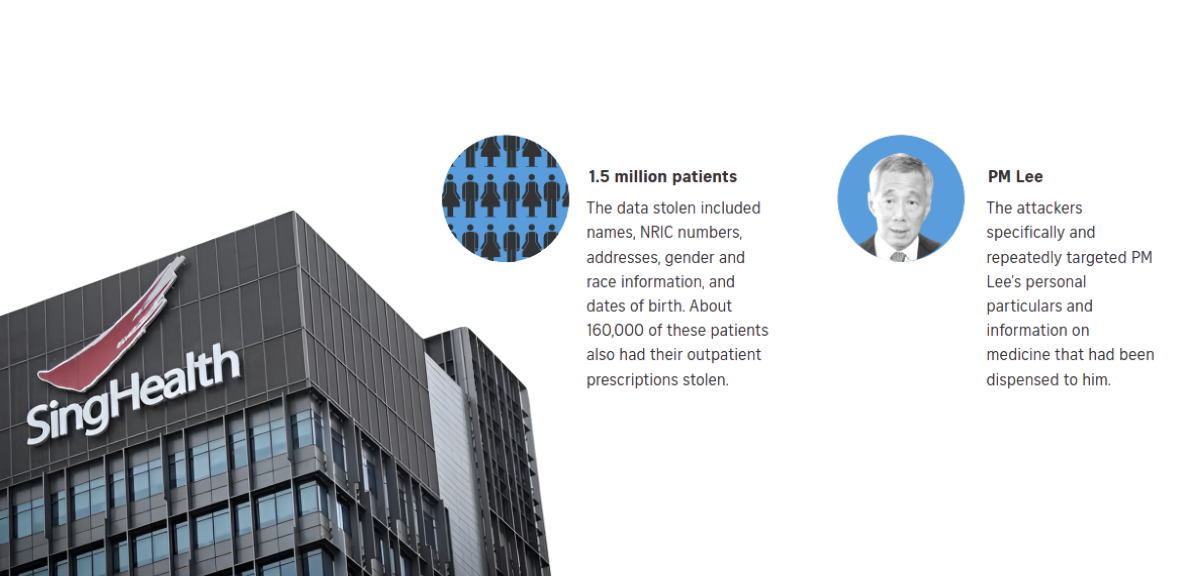The SingHealth Data Breach: Lessons in Compliance and Cybersecurity

Imagine waking up to find that your private medical records, previously safeguarded by a trusted healthcare provider, are now in the hands of hackers. For 1.5 million Singaporeans, this nightmare became a reality in 2018, as their sensitive information, including the personal data of Singapore’s Prime Minister, was stolen in one of the country’s most significant data breaches.
This article delves into the SingHealth data breach, revealing how this high-stakes cyberattack unfolded, what went wrong, and why it highlights the urgent need for robust compliance and cybersecurity measures.
What Happened? A Timeline of the SingHealth Breach
SingHealth, Singapore’s largest healthcare group, oversees a vast network of hospitals and clinics. Between June 27 and July 4, 2018, hackers gained unauthorized access to its patient database, compromising the personal details of 1.5 million people. The stolen information included names, addresses, National Registration Identity Card (NRIC) numbers, and, for 160,000 patients, medical prescription records.
Among the data specifically targeted were the personal details of Prime Minister Lee Hsien Loong, indicating that this breach was likely more than just an ordinary hack. Experts speculate it was a deliberate attempt by state-linked actors—sophisticated entities often backed by governments—to gain access to sensitive, high-profile data.

How Did the Hack Happen?
The breach followed a well-calculated series of moves. Hackers first infected workstations with malware, stole login credentials, and gradually infiltrated deeper into the SingHealth network. Despite initial detections of suspicious activity by Integrated Health Information Systems (IHiS), which managed SingHealth’s IT systems, the attack continued until July 4, when the hackers were finally blocked.
Unfortunately, by the time the breach was publicly disclosed on July 20, hackers had already exfiltrated the data and covered their tracks.
Delays and Vulnerabilities: Key Gaps Uncovered by the Committee of Inquiry
After the breach, Singapore’s Cyber Security Agency (CSA) and a Committee of Inquiry were appointed to investigate. Their findings revealed a range of systemic vulnerabilities and gaps in cybersecurity practices:
- Unpatched Software: A critical Microsoft Outlook patch, which could have prevented the attack, had not been applied. With access since August 2017, hackers exploited this oversight, leaving SingHealth systems vulnerable for nearly a year.
- Ignored Alerts and Training Gaps: Multiple failed login attempts and unusual activity had gone unnoticed or received inadequate responses, due to inadequate training and unpreparedness among staff.
- Second Attempt Blocked: During the inquiry, a second hacking attempt on July 19 was blocked, underscoring the persistent nature of the attackers and highlighting further gaps in real-time threat detection and response.
- Outdated Systems: Many servers hadn’t been updated in over a year, and outdated antivirus software was still in use. Such vulnerabilities create easily avoidable entry points for attackers.
Key Takeaways and Recommendations
The Committee’s report called for a shift in mindset and practice. Here are the primary recommendations made to prevent similar breaches:
- “Assume Breach” Mindset: Organizations should act as if they are constantly under threat. This means regular threat assessments, data security audits, and penetration testing.
- Two-Factor Authentication: Strengthening access points with multi-factor authentication adds a crucial layer of security, making it more challenging for attackers to infiltrate systems using stolen credentials.
- Routine Patching and Updates: Ensuring software and systems are up-to-date is essential for vulnerability management. Regular updates significantly reduce exploitable gaps.
- Cybersecurity Training for Staff: Equip employees with the knowledge to recognize and respond to potential cyber threats. Reporting systems should also be streamlined to encourage swift action when anomalies arise.
Consequences and Accountability: The Impact of the Breach
In 2019, Singapore’s Personal Data Protection Commission (PDPC) imposed a SGD 1 million fine on IHiS, one of the largest penalties in the country’s history. This severe penalty was a clear statement of accountability, reflecting both the scale of the breach and the negligence in protecting sensitive information. It also served as a stark reminder that cybersecurity is not just a technological issue but an essential part of compliance.
Why Compliance and Cybersecurity Are More Critical Than Ever
The SingHealth breach underscores the critical need for stringent compliance and cybersecurity measures, especially within sectors that manage vast amounts of sensitive data. Compliance must become a proactive, integral part of daily operations, rather than a regulatory afterthought.
For organizations, whether in healthcare or any other data-sensitive industry, the takeaway is clear: invest in strong cybersecurity frameworks, ensure consistent compliance, and empower employees with the skills needed to maintain vigilance. As data grows in value, so does the responsibility of protecting it, making cybersecurity a core component of both compliance and organizational integrity.
Final Thoughts: Compliance as a Core Value, Not a Checkbox
The SingHealth breach is a cautionary tale that compliance and cybersecurity must be woven into the fabric of an organization’s culture. Building an environment of transparency, responsibility, and awareness not only protects valuable data but also strengthens trust and reputation in a competitive market.
So, what’s your stance on the handling of the SingHealth breach? Could there have been a faster, stricter response? Let us know in the comments. And don’t forget to stay informed and proactive in protecting what matters most—your data.